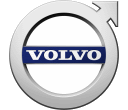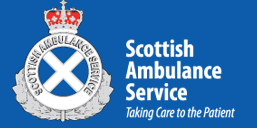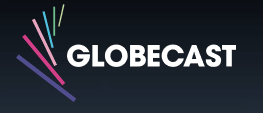USA
800 691 9120
UK
01225 704844
We use cookies on our website to analyze website usage and to help secure the website against misuse. Advertising and functional cookies are not used in our site or our web application products.
By clicking “Accept Essential Cookies Only”, you consent to us placing these cookies.
Systems management tools are defined as solutions that manage enterprise-wide administration of distributed systems, including computer systems. Systems management is strongly influenced by network management. Maximum productivity can be achieved more efficiently through event correlation, system automation, and predictive analysis. It includes remote control, patch management, software distribution, operating system deployment, network access protection, and hardware and software inventory. Note the lack of any IT Asset Management capabilities.
Systems management tools play a key role in maintaining the overall IT infrastructure. As part of that function, systems management tools must be able to discover and identify devices on the network and have some “awareness” of the software already installed. Many have reporting capabilities built in, which lead some IT managers to rely on the systems management tool for hardware and software discovery and inventory. Therein lies the problem.
Key benefits of integrating the two solutions:
Unlike ITAM systems, systems management tools are not designed to collect, or report detailed system information. After all, their main purpose is to get software out to the endpoints and provide some level of network protection; however, they are not designed to thoroughly interrogate those endpoint devices, or to provide the data classification, recognition and reporting services needed to properly make strategic decisions.
The current release of Microsoft Endpoint Management does not inventory the entire installed software base or hard disk for executables – only “managed” applications are monitored. This leaves the asset inventory lacking in key information needed to make business decisions.
One of the most widely used systems management tools utilizes deployed agents to collect configuration information. According to the publisher’s website, the software collects hardware and software inventory by enabling the client agents on a site-by-site basis. The hardware inventory agent collects available disk space, processor type and operating system for each computer. The software agent, in turn, identifies inventoried file types and versions and collects specified files. The Inventory client agents then can be used to create an inventory report based on the client inventory information collected. The resulting reports are perfectly suited for administering software on the network, but not detailed enough for use in an ITAM practice.
ITAM is defined as “The set of business practices that join financial, contractual and inventory functions to support life cycle management and strategic decision making for the IT environment. Assets include all elements of software and hardware that are found in the business environment. ITAM includes gathering detailed hardware and software inventory, and ITAM practices minimize the risks and related costs of advancing IT portfolio infrastructure projects based on old, incomplete and/or less accurate information.
There is a world of difference between the information generated by a solution that is primarily designed to deploy software across a network and one that is intended to “join financial, contractual and inventory functions to support life cycle management and strategic decision making for the IT environment.” ITAM solutions do not manage systems well and systems management tools do not perform ITAM tasks well. However, combined, they make a superb team.
Using two solutions raises the question about data consistence and integrity. Management needs to have one, reliable, accurate source of information regarding the IT infrastructure. If hardware devices, including network management devices such as switches and routers are omitted, decisions regarding upgrades, and disposals are impacted. If software licenses and installations are missed, software license compliance is impacted. Manual reconciliations of two systems are difficult, time consuming, and prone to errors.
However, this needs not be a concern. A competent ITAM solution will utilize the data collected by the systems management tools and combine it with the discovery and inventory data, eliminating duplicates and providing a complete detailed inventory of the network. Moreover, an agentless ITAM solution will scan every device detected and will report those devices without an agent, or in which the agent has been removed or is corrupted. Where a systems management tool solution may report the make, model and quantity of the discovered devices, the ITAM solution will report the discovery date, asset type, serial number, description, asset number (bar code), OS version, disk space and type of each disk, processor type, physical location and username.
The following diagram illustrates the real benefit of using an ITAM solution in conjunction with a systems management tool.

The same applies to software. Consider the following reports generated by Intune:


It displays the computer name, manager, ownership, compliance and OS details, and the software list for that device shows the technical key of the application name (such as Microsoft.BingWeather). It’s good enough to list the managed apps on the system, but wholly inadequate for an audit or for a licensing analysis.
Now consider the level of detail generated by an ITAM solution that has imported software information from the systems management tool. The software has been recognised and cleaned for accuracy.

The inventory, plus all the relevant licensing information, is displayed in a format that can be used by IT managers to identify problems and make decisions regarding software acquisitions.
The benefits of utilizing both a systems management tool and an IT asset management tool are numerous. Beyond generating actionable information about the entire IT infrastructure, a complete ITAM solution can be used to discover and report on devices with faulty or no agent. It scans every device, even those which may not support an agent. Software titles are normalized, creating accurate information crucial in performing license reconciliation. Moreover, the ITAM solution is designed to create a wide range of standard and customized reports that provide in-depth information to management. The ITAM system will also perform lifecycle analysis, identifying obsolete and disposed devices.

xAssets IT Asset Management toolset natively includes Microsoft Endpoint Management (Intune) integration to extract computer records. It also natively supports Azure AD integration for Single Sign On and for extracting user information, and JAMF for extracting detailed information on mobile devices. The combined solution provides a single pane of glass to your entire IT asset inventory.
Free instances are free forever and can show demo data or your data.































